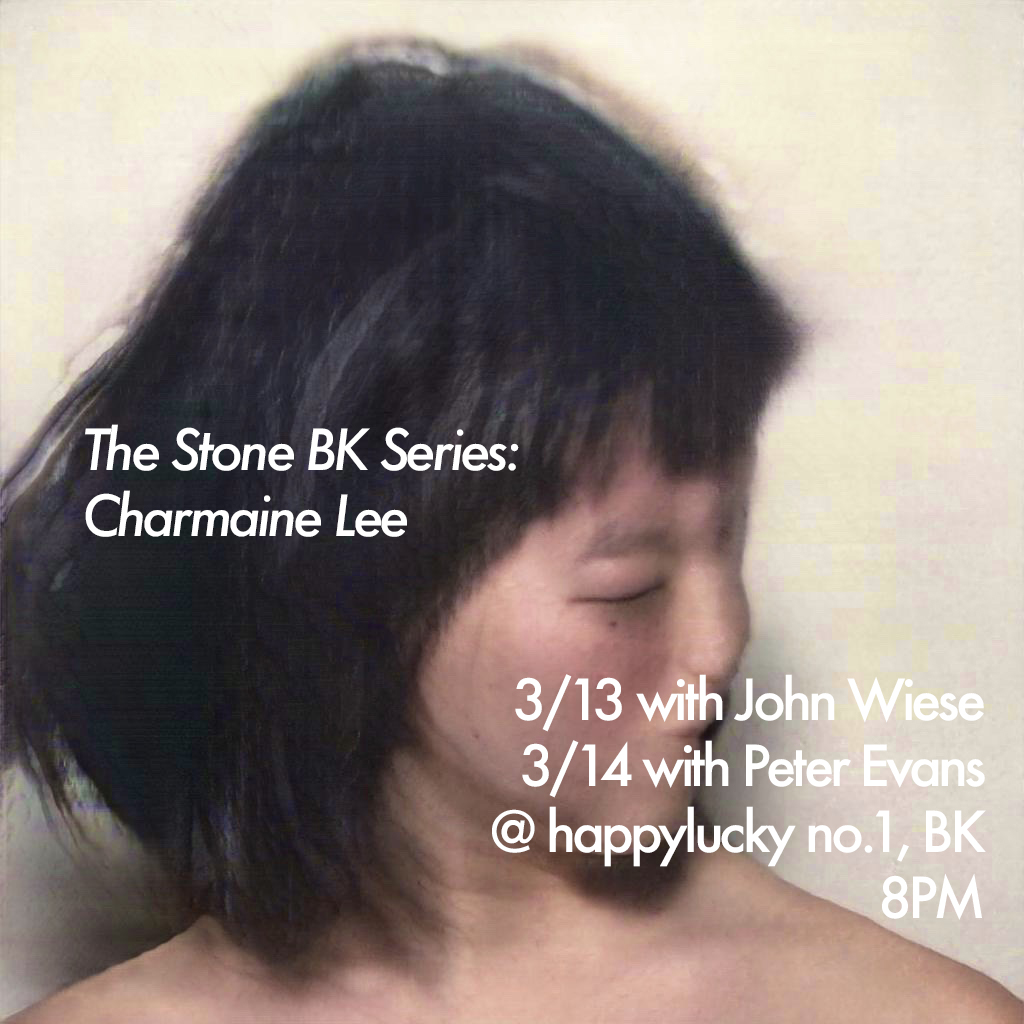Tag Archives: Charmaine Lee
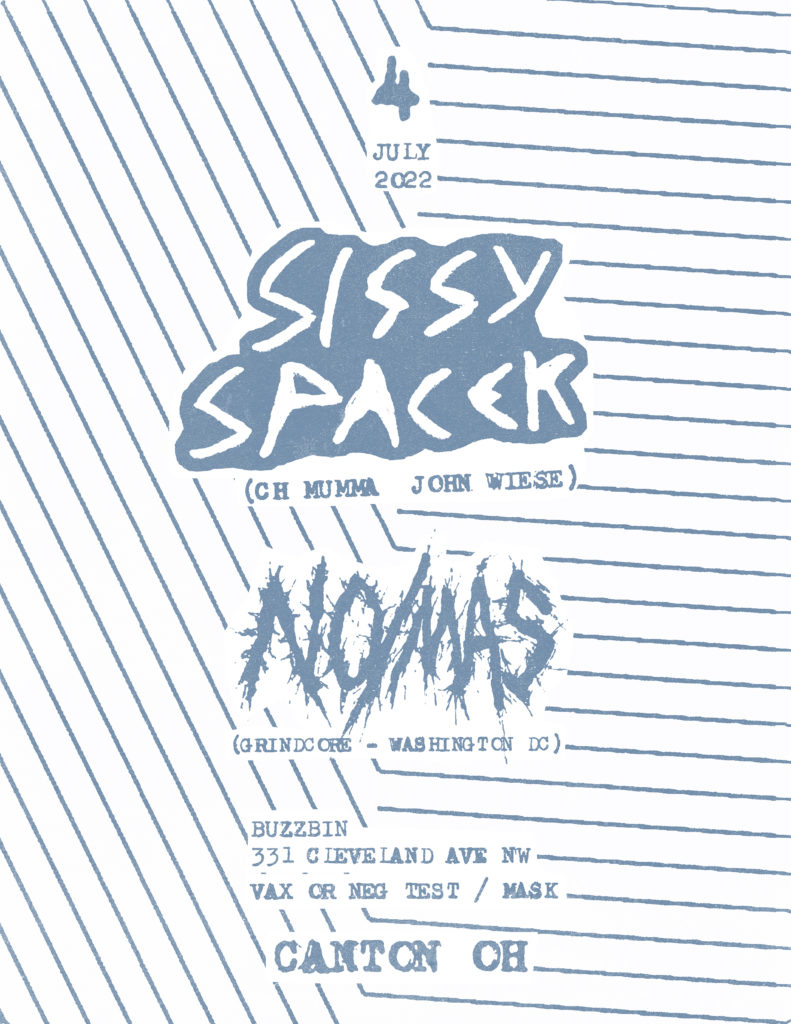
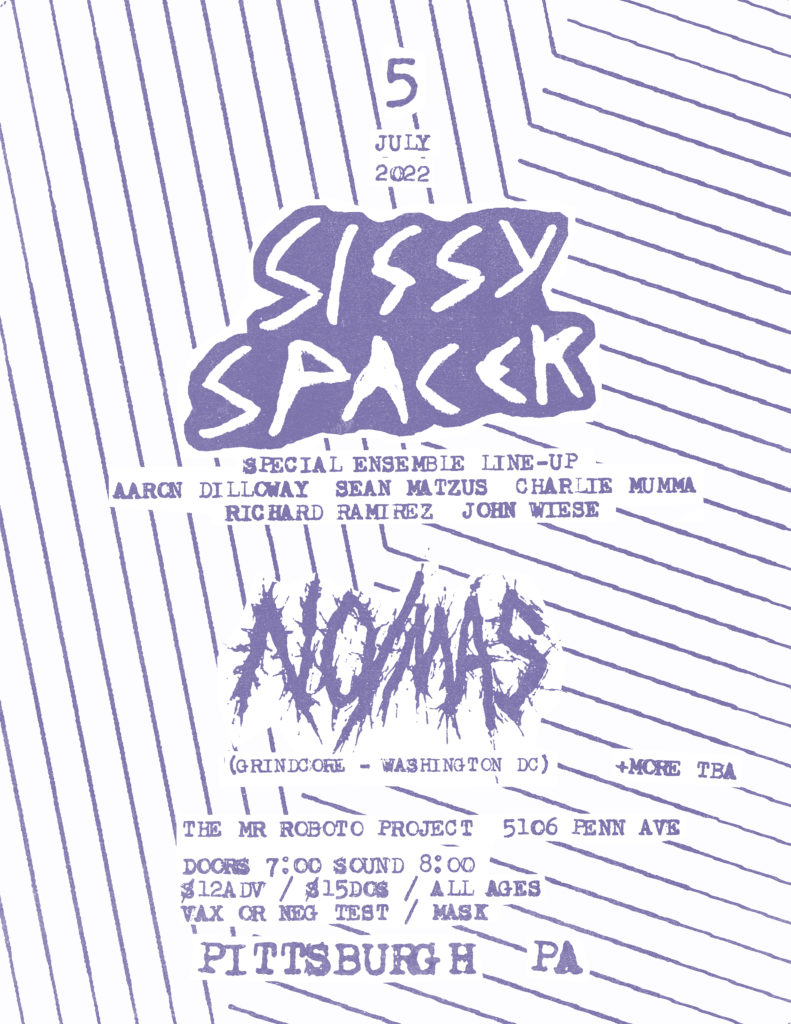
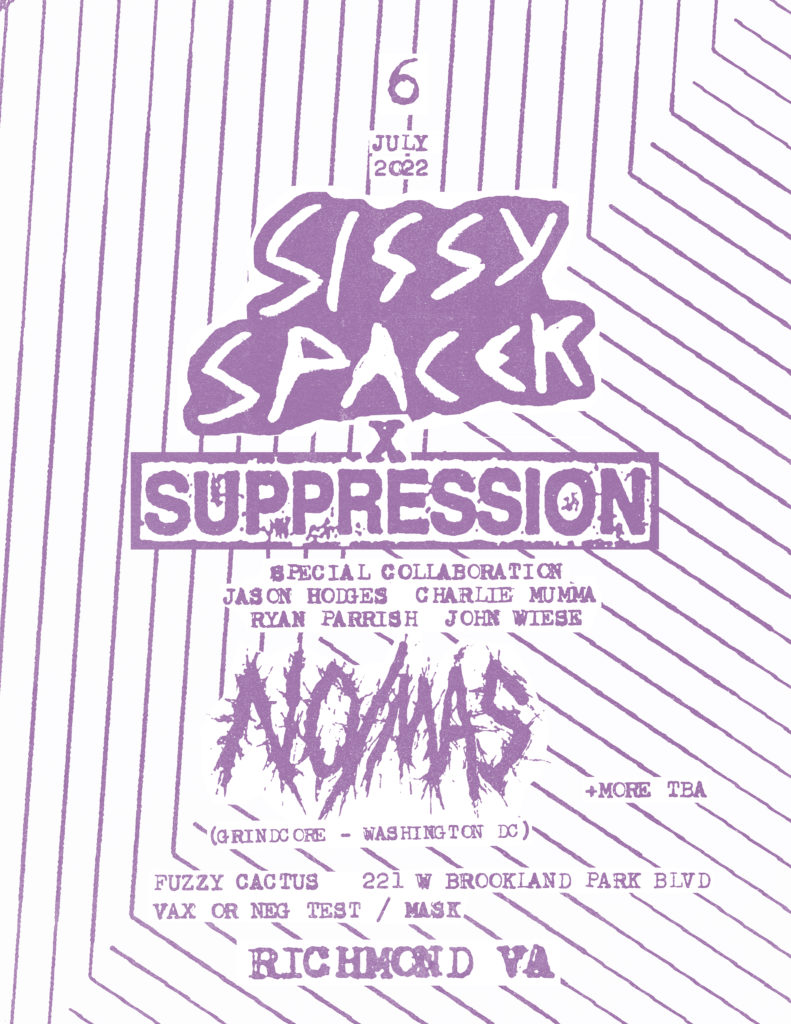
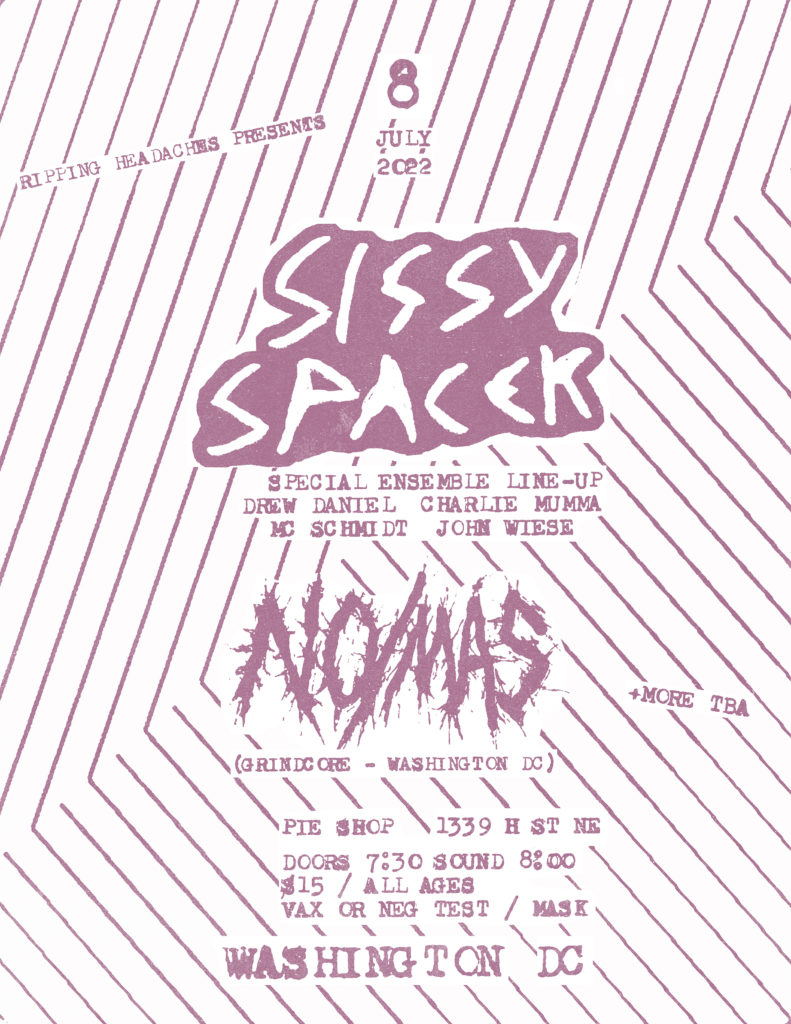

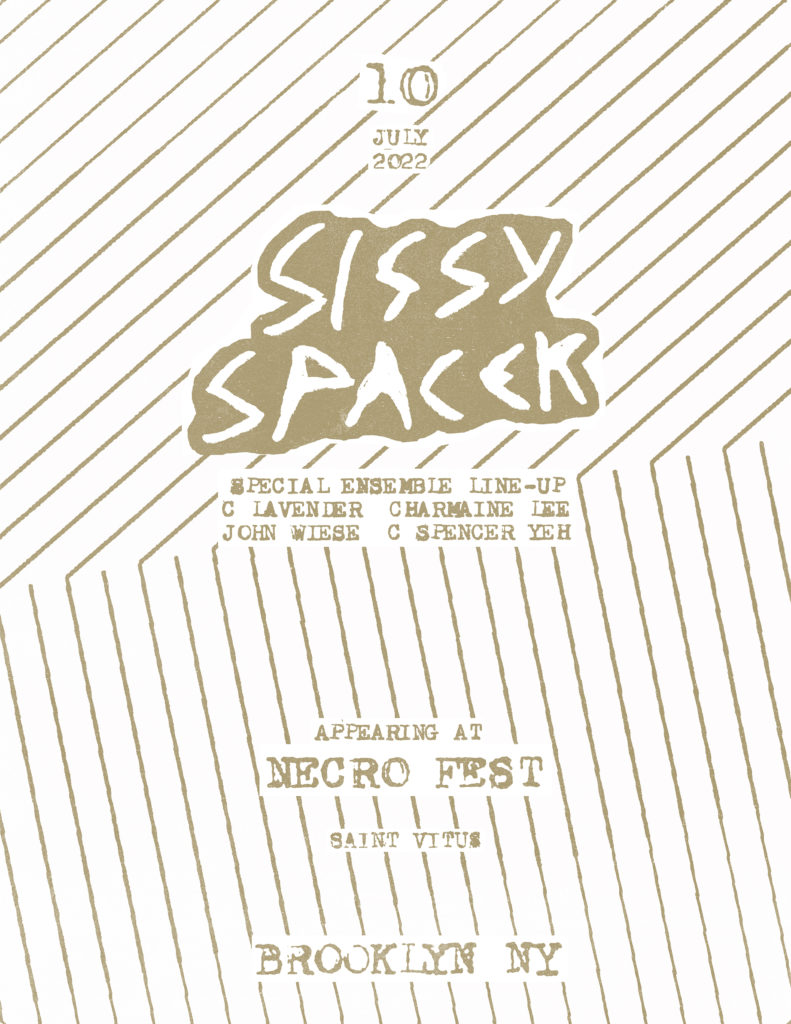
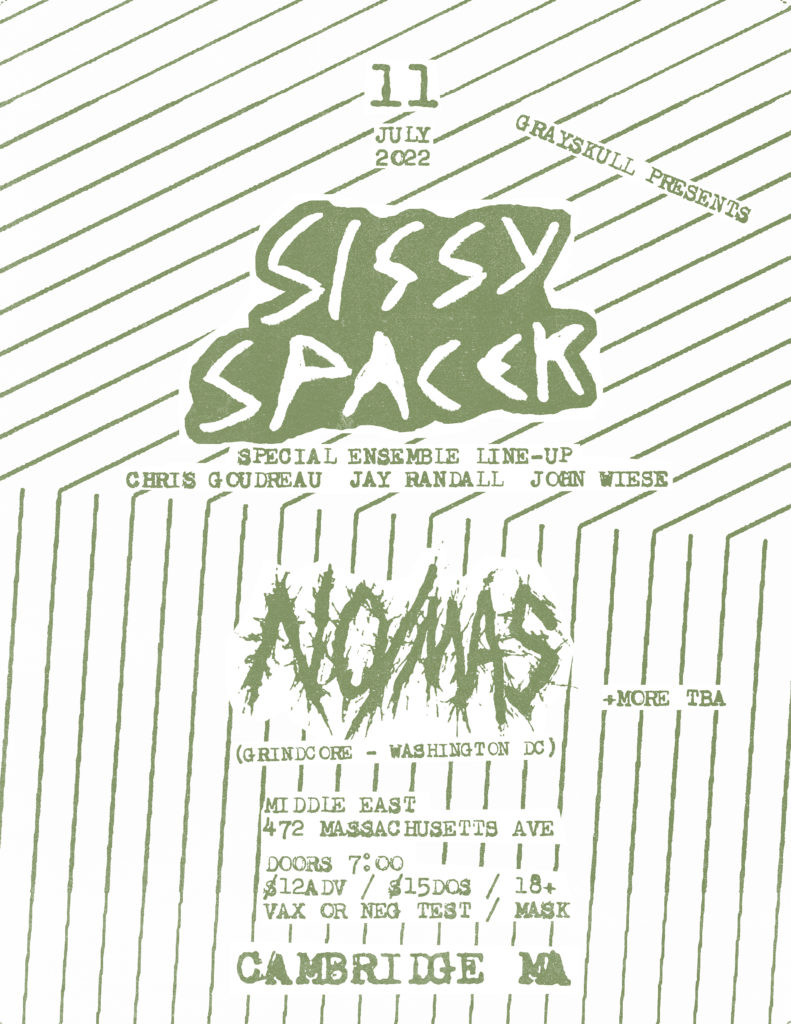

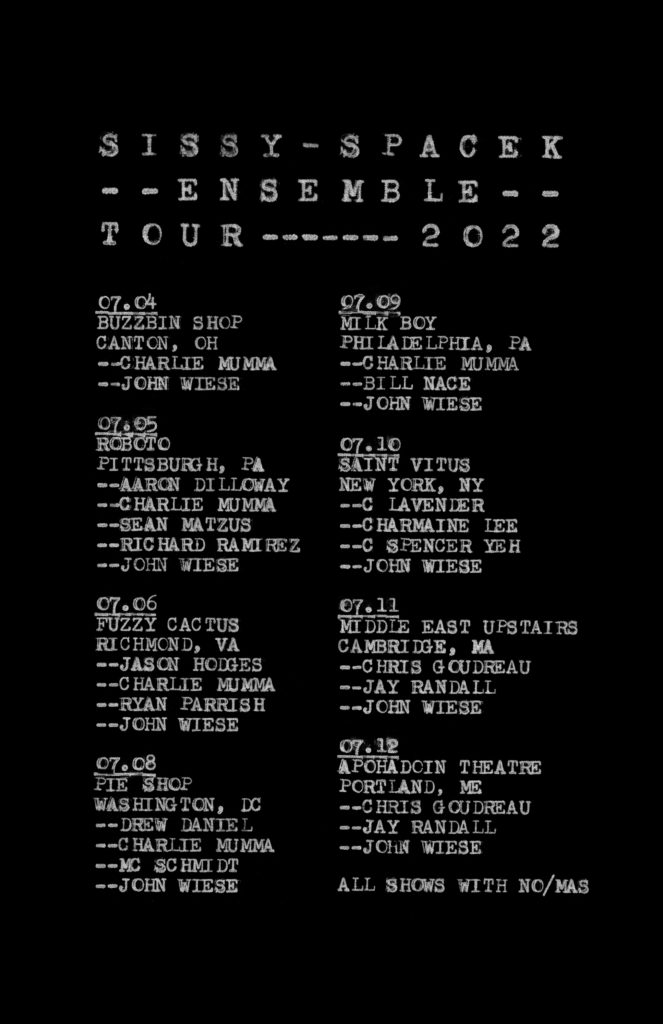
Sissy Spacek Ensemble Tour 2022
All shows with No/Mas.
=============
VITAL WEEKLY
Number 1253
Week 41
JOHN WIESE — MAGNETIC STENCIL 1 (CD by Helicopter/Troniks)
JOHN WIESE — MAGNETIC STENCIL 2 (CD by Helicopter/Troniks)
AARON DILLOWAY, ROBERT TURMAN, JOHN WIESE — ELECTRONIC EXTENSION (CD by Helicopter/Troniks)
Here are three new titles featuring the ever-restless John Wiese in-studio and live collaboration. Dude must never sleep, holy moly. The first two volumes of “Magnetic Stencil” are shades/variations of an idea he’s approached from different angles before: large-scale collaboration. With his group Sissy Spacek, he’s brought in large groups of artists for studio and live projects like “13-tet Oakland”, “15-tet Oakland” and “Duration Groups”. For the “Magnetic Stencil” project, which is slated to extend to five volumes, Wiese asked an assortment of composers/performers to send him long tracks of sound with space it, which he intended to layer and compose exquisite-corpse style. The first volume incorporates sonic material from Charmaine Lee, Aaron Dilloway, James Fella, Masaya Nakahara (aka Hair Stylistics), C. Lavender, Lasse Marhaug, Katsura Mouri (of DOOG, formerly of Busratch), Aaron Hemphill (ex-Liars) and C. Spencer Yeh. The second has a smaller cast: Aaron Dilloway, Toshiji Mikawa (of Incapacitants), Joe Potts (LAFMS, Airway) and Robert Turman.
Remarkably, “Magnetic Stencil 1” more closely resembles a live performance document than the studio creation it actually is. Wiese is careful to let each sonic element of his ensemble breathe and resonate off the others. Despite the sheer number of contributors, the music is never cluttered or diffuse. Both untitled pieces coalesce into phrasings and events that players might organically have gravitated towards if they were improvising together in real-time. The first track opens with Charmaine Lee’s voice is centre stage, bracketed by synthetic stuttering and record-skipping in vibrant stereo. As Lee’s voice retreats from recognizably human utterances into tiny pops and breath, the music morphs into a swirl of loopy tapes, rhythmic clomp and flurries of turntable scramble. A resonant bell-like tone surfaces on occasion to function as a sober, centring motif amid the electro-acoustic activity. The second track seems like a continuation of the first, sharing with it openness and deliberate pacing. The track starts with thunderous percussion, abrasive scrape and sombre piano upfront. The electronics are secondary to scraped cymbals and crashing piano keys, all of it seems to exist in the same acoustic space as if the players can hear and respond to one another… which is remarkable because, by design, they can’t. Volume two of “Magnetic Stencil” features fewer contributors, but it’s a denser piece of music. Unlike the episodic ebb and flow of “Magnetic Stencil 1”, “Magnetic Stencil 2” establishes a continuous, more vertical sound, a unified whooomph of soaring tones and clatter… which disintegrates after about six minutes, the drone replaced by convulsive tape-rewind stabs. Wiese takes his time here, passing through sections of instability while slowly building back to the piece’s initial heft. The second track leans on tape effects, voices elongated and pulverized but still (mostly) recognizably human-sourced. Towards the piece’s conclusion, musical fragments (from pop radio?) hiccup from inside a haze of dismal crawl.
“Electronic Extension” features three of the artists from “Magnetic Stencil 2” in live performance: first is a duo of just Wiese and Dilloway, then they’re joined by Turman for the second piece. If Wiese’s “Magnetic Stencil” albums impress for sounding as if they’re live when they are actually not, “Electronic Extension” is the opposite. The confident deployment of materials and textures unfolded in real-time in front of an audience but sounds as if it was carefully built in a studio. A section of resonant gong punctuated by slurred tapes and metal junk tumble is particularly effective; each element has sonic depth, each interjection purposefully sustaining the mood without seeming (as live improvised music often can) to impatiently search for the next zone. Wiese and Dilloway’s 25-minute duo track is atmospheric, the steady accumulation of breaking glass holding tension in place for long enough to let listeners notice how much is actually happening. On my third listen through, I could make out the slow-tape melodic fragment that pulls through the piece’s middle section. On my fourth listen, I’ll bet more details and complementary lines will jump out for me. The trio with Robert Turman is looser, more exploratory. Tape warble is the prominent sound component here (as it should be), slowly creeping along with the lower layers with controlled bursts of noise commentary, metallic scrape and haunted tones floating above a magnetic skeleton. (HS)
––– Address: http://helicopter-la.com/
––– Address: https://shop.iheartnoise.com/
